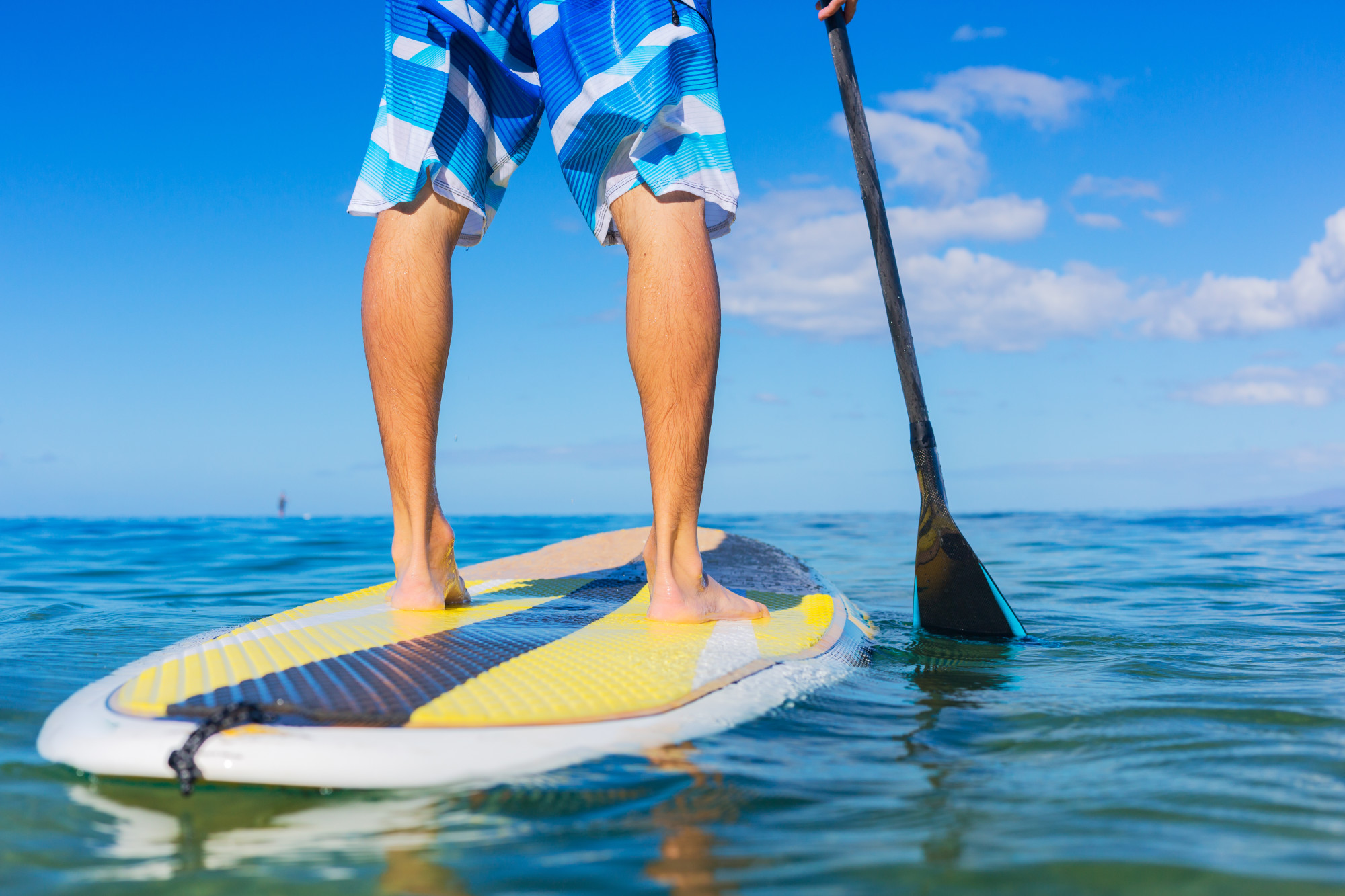


Did you know that 53% of Americans aged 6 and up participated in outdoor activities during 2020? That’s a year-over-year increase of more than 7 million people enjoying the fun our country’s natural beauty has to offer.
Paddle boarding is a great way to experience awesome scenery from a unique perspective. So, why not join in the fun with a hobby that will leave you with lasting memories and experiences?
If you’d like to give it a go, these paddle boarding tips should float your boat and set you on the path to a lasting pastime you can enjoy solo or with friends and family.
Read on for 8 indispensable paddle boarding tips for beginners and begin your adventure today.
As with all outdoor pursuits, safety should be prioritized when paddle boarding. One of the best ways you can ensure a safe and fun experience is by using a leash. Leases keep you attached to your paddle board and greatly reduce the risk of you getting into trouble on the water.
Depending on your paddleboard and your skill level, there are different types of paddle board leashes available. As a beginner, you’ll most likely benefit from an ankle-leash setup. However, there are also calf and waist leashes for more experienced boarders and rougher waterways.
You should also consider your body type when selecting a leash. The pull of a leash can put stress on the body part that it’s strapped to, so those with ailments should select accordingly.
If you’re learning how to paddle board, it’s worth familiarizing yourself with the proper technique. That way, you’ll get the most out of your experience and minimize the risk of injury.
Your core is your engine while paddle boarding. While it might feel more natural to drive with your arms at first, trust us when we say that using your core will generate more thrust and let you paddle for longer.
Stay efficient by standing up straight, maintaining your balance, and controlling your breathing. You’ll find that your technique improves exponentially with practice and perseverance.
Balance is key when it comes to paddle boarding. When you first start out, you’ll probably feel inclined to look at your feet and make sure you’re not going to fall in!
However, true stability is best achieved by maintaining a good posture, balancing your weight over your toes, and looking straight forward into the horizon.
Looking down compromises your center of gravity and can cause you to roll back on the balls of your feet. While you paddle, think about your posture and look where you want to go.
Even though we have all the space in the world, paddle boarders always seem to bunch up together on waterways. Obviously, everybody is looking for that perfect stretch of water with the ideal conditions. But, this means that good spatial awareness is a must for paddle boarders.
Make sure to be mindful of other water users. That way, everybody can enjoy the fun without the risk of getting hit by a paddle or getting pushed off balance in your wake!
Be vocal to let others know that you’re passing or approaching them, and always be respectful of those around you.
Even the most experienced paddle boarders know that falling off your board is sometimes par for the course. And on your first-time paddle boarding, you’ll probably hit the water a fair bit.
Therefore, you need to take some time to learn how to fall safely, minimizing the risk of injury. Always try to fall away from your board to avoid hitting it when you land. Just like other techniques, you should practice falling in a controlled environment to make sure you’re ready when it happens for real.
Mastering this skill is particularly important if you’re planning on paddle boarding anywhere with waves or a current, because your board will move independently if you get unseated.
If you’re just learning how to use a paddleboard, it’s wise to stick to waterways suited to your skill level. You have all the time in the world to improve your technique and expand your horizons, so take your time and start out somewhere manageable.
Lakes and other still bodies of water offer excellent learning opportunities. Hone your skills in these controlled environments before taking on something more challenging.
There’s no need to rush your progress. The most accomplished paddle boarders spend years progressing through different types of waterways. Make sure you understand the flow of the water before attempting any expedition.
Weather can have a huge effect on tides and currents. The calm waters of a sunny day offer a totally different ride than rough, windy waters.
If you want to get the most out of your day on the water, plan around the weather forecast. You can paddleboard in most conditions, but for the sake of comfort and visibility, you should try to choose a day with minimal wind and rain.
If you’re planning an overnight or multi-day paddleboarding adventure, factor in the week’s weather. Good preparation can mean the difference between success and disaster.
Your paddle-boarding adventures will only ever be as good as your gear and equipment. Take proper care of your paddle board to ensure years of ongoing fun and enjoyment.
Make sure you rinse and clean your board after each use. This will help maintain the protective coating and extend your board’s lifespan. Dry the board completely and store it according to the manufacturer’s directions.
Our final advice is to always have fun while out on the water. And by following these straightforward paddle boarding tips, we’re confident that you will.
Now that you know how to start your paddle boarding adventure, it’s time to get out on the water and enjoy yourself. Check out these top Jacksonville paddle boarding spots for ideas.